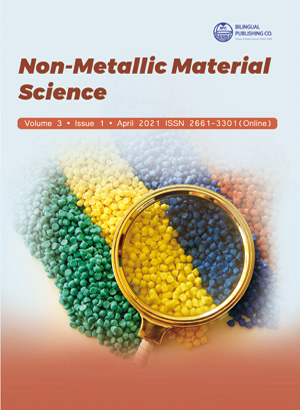-
920
-
908
-
876
-
506
-
392
Allowed Spatial Transitions and Cancellation of the Richardson-Langmuir Ban
DOI:
https://doi.org/10.30564/nmms.v3i1.3379Abstract
The ancient emission formulas of Langmuir and Richardson entered the calculations of subtle effects in semiconductor devices as basic ones. But, in the physics of semiconductor devices, these models have long played a purely decorative role, since they can describe in the most rough approximation only individual sections of the I – V characteristic. But it is precisely the fact that these formulas are basic when describing the barrier current-voltage characteristics (CVC) and prevented the consideration and use of thermoelectric effects in materials on a nano-scale. Thus, as these basic emission models actually imposed a ban on the MEASURABILITY of local thermoelectric effects, the existence of which has already been proven both phenomenologically and experimentally. The quantum transition technique is based on classical models. But it can also be used to correct these classic formulas. The calculation of the spatial transition of electrons over the potential barrier, taking into account the polarity of the kinetic energy, gives currents that are significantly higher than the currents of Langmuir and Richardson, including in the initial section of the I – V characteristic. Moreover, ballistic currents are concentrated at energy levels close to the threshold. This effect of condensation of electrons flowing down the barrier transforms the "anomalous" Seebeck coefficients into normal EASURABLE Local Thermal EMF, including in p-n junctions.
Keywords:
Potential barrier, Ballistic model, Spatial transition of electrons, Electron condensation, Local Thermo-EMF, p-n junctionsReferences
[1] Ordin S.V., “Non-Elementary Elementary Harmonic Oscillator”, American J Mater Appl Sci (AJMAS). 2021, March 08;3(1): 003-008 p.
[2] Stanislav V. Ordin, « Impedance of Skin-Plasma Effect», International Journal of Engineering Research and Development (IJERD), ), Volume 16, Issue 12, Version - 1 (December 2020),e-ISSN: 2278-067X, p-ISSN: 2278-800X, Ref id AB911011, Impact Factor 4,61.
[3] Ordin, S.V., «CHAOS – IMAGINARY OSTENSIBILITY – ORTHOGONALITY», Global Journal of Science Frontier Research- Physics & Space Science (GJSFR-A), Volume 19 Issue 3 Version 1.0 p.49-58.
[4] Ordin S.V., Refinement and Supplement of Phenomenology of Thermoelectricity, American Journal of Modern Physics, Volume 6, Issue 5, September 2017, Page: 96-107. DOI: 10.11648/j. ajmp. 20170605. 14.
[5] S.V. Ordin, “Experimental and Theoretical Expansion of the Phenomenology of Thermoelectricity”, Global Journal of Science Frontier Research- Physics
[6] & Space Science (GJSFR-A) Volume 18, Issue 1, p.1-8, 2018.
[7] Ordin S.V., “Cardinal increase in the efficiency of energy conversion based on local thermoelectric effects”, International Journal of Advanced Research in Physical Science, Volume-4 Issue-12, p. 5-9, 2017.
[8] Ordin S.V., Zjuzin A. Yu., Ivanov Yu. and Yamaguchi S., Nano-structured materials for thermoelectric devices, NATO Workshop “Advanced Materials and
[9] Technologies.
[10] for Micro/Nano-Devices, Sensors and Actuators”June 29 - July 2, 2009, St Petersburg, Russia.
[11] S. V. Ordin, A. J. Zjuzin, Yu. Ivanov, S. Yamaguchi, «Nano-structured materials for thermoelectric devices», The 29th International Conference on Thermoelectrics, May 30 ~ June 3, 2010 Shanghai, China, P1-14.
[12] A.M. Filachev, I. I. Taubkin, M.A. Trishenkov,“SOLID STATE PHOTOELECTRONICS (Photodiodes)”, Moscow, publishing house “FIZMATKNIGA”( Physics and Mathematics Book), 2011, 448 pages.
[13] S.V. Ordin, W.N. Wang,“Thermoelectric Effects on Micro and Nano Level.”, J. Advances in Energy Research, Volume 9, 2011, p.311-342.
[14] Thermionic converters and low-temperature plasma, ed. B. Ya. Moyzhes and G.E. Pikusa, M., Nauka, 1973, 532 pp.
[15] N.A. Arkfen, Н. Mermin, Solid State Physics, Москва, ИздательствоWorld, 1979, 2 v.
[16] Jan Tauc, Photo - and thermo-electric phenomena in semiconductors, Moscow, Publishing House of the Foreign Literature, 1962, 254 pp.
[17] S.V. Ordin, «“Anomalies in Thermoelectricity and Reality are Local Thermo-EMFs», Global Journal of Science Frontier Research- Physics & Space Science
[18] (GJSFR-A), Volume 18 Issue 2 Version 1.0, p. 59-64, 2018.
[19] A.F. Ioffe, Semiconductor thermoelements, Moscow-Leningrad, Publishing house of the Academy of Sciences of the USSR, 1960, 188 p.
[20] L.S. Stilbans, The thermoelectric phenomena, in the book: Semiconductors in a science and engineering, v. I, Moscow - Leningrad., Publishing house an Academy of Sciences USSR, 1957, p. 113 - 132.
[21] C.M.Sze, Physics of Semiconductor Devices, A Division of John Wiley and Sons, New York, London, 1969, 310 pp.
[22] V.I. Gamache, Physics of Semiconductor Devices, Second Edition, Moscow-Novosibirsk-Tomsk, NTL Publishing House, 2000, 426 pp.
[23] Stanislav Ordin, Book: “Refinement of basic physical models”, Lambert, 2017, ISBN: 978-3-659-86149-9, 82 pp.
[24] F. Bechstedt, R. Enderlein, Semiconductor Surfaces and Interfaces, Physical Research V.5, Akademie-Verlag Berlin, 1988, 484 pp.
[25] J.M. Ziman, Principles of the theory of solids, Cambridge, University Press, 1972, 450 p.
[26] E. H. Roderick, Metal-semiconductor contacts, M., Radio and communication, 1982, 231p.
[27] S.V. Ordin, LOCAL (NANO) THERMOELECTRIC EFFECTS, Journal of Modern Technology and Engineering (ISSN 2519-4836), Vol.5, No.1, 2020, p.107-109.
[28] S.V. Ordin et al., “Investigation of the possibility of creating wide-spectrum uncooled sensors for laser radiation identification”, abstracts of the scientific and practical conference “Modern Trends and Principles of Optoelectronic Systems Construction” February 9-10, 2012, ROSTEHNOLOGY, UOMZ, bstracts p.62-63, 2012. ISBN: 978-5-85-383-486-6.
[29] S. V. Ordin, Yu. V. Zhilyaev, V. V. Zelenin, V. N. Panteleev, Local Thermoelectric Effects in Wide-Gap Semiconductors, Semiconductors, 2017,Vol.51,No.7, pp. 883–886.DOI: 10.21883/FTP.2017.07.44643.29.
[30] S.V. Ordin, Book: Optical Lattices: Structures, Atoms and Solitons, “Giant spatial dispersion in the region of plasmon-phonon interaction in one-dimensional- incommensurate crystal the higher silicide of manganese (HSM)”, Editors: Benjamin J. Fuentes, Nova Sc. Publ. Inc., 2011, pp. 101-130. 241, ISBN: 978-1-61324-937-6.
[31] Y. Okamoto, S.V. Ordin, T. Miyakawa, Journal of Applied Physics,v.85,9, 1999, p. 6728 -6737, IR-characterization of sintering SiC termoelectric semiconductors with use of 4-component effective medium model.
[32] Ordin S.V., Sokolov I.A., Dimension Effect in Lattice Absorption of Silicon Carbide, Technical Digest of the 7th International Conference on Optical Technology, Optical Sensors and Measuring techniques 30 May-1 June 2005 Nuremberg Exhibition Centre, Germany, OPTO2005 conference paper 9,p.121-124.




 Ordin S.V.
Ordin S.V.





